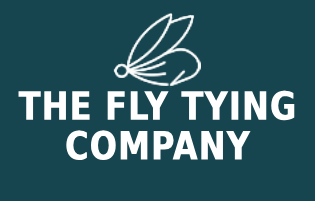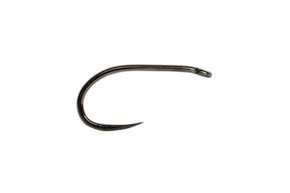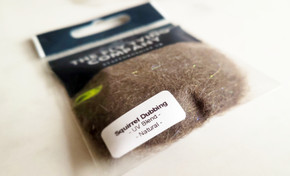Origin and History
The Klinkhamer Special, often called the “Klink,” was developed in the early 1980s by Dutch angler Hans van Klinken. Originally tied to imitate large caddis emergers for grayling on the Glomma River in Norway, it soon became one of the most influential modern fly patterns. Its key innovation was suspending the abdomen below the water’s surface while keeping the parachute hackle and wing post visible above — perfectly imitating an insect in its vulnerable emergence stage. Today, it’s fished worldwide for both trout and grayling.
Materials
- Hook: Curved shank emerger hook, sizes 10–18
- Thread: Black or olive 8/0
- Body: Seal’s fur or synthetic dubbing (olive, brown, grey, or black)
- Thorax: Peacock herl or darker dubbing
- Hackle: Grizzle or brown cock hackle (parachute style)
- Wing Post: White poly yarn, calf body hair, or foam for visibility
- Tail/Shuck: Sparse fibres of Z-lon or optional guard hairs
Popular Variations
- Olive Klinkhamer – slim olive body, excellent on mayfly hatches
- Black Klinkhamer – superb for dark water and low light
- Red Tag Klinkhamer – adds a red tail for extra attraction
- CDC Klinkhamer – CDC fibres used instead of yarn for more natural drift
- Klink & Dink – used as an indicator fly with a nymph dropper
Step-by-Step Tying Guide
- Start your thread at the bend of a curved emerger hook and lay a thread base halfway up the shank.
- Tie in a small bunch of poly yarn or calf hair upright as the wing post, securing it vertically.
- Tie in a cock hackle feather at the base of the post, with the stem pointing upwards.
- Dub a slim tapered body down the curve of the hook, leaving it to hang below the surface when fished.
- Add a small shuck or tail of Z-lon fibres if desired.
- Build up a thorax of peacock herl or darker dubbing just in front of the body.
- Wind the hackle parachute-style horizontally around the wing post, making 3–5 turns.
- Whip finish neatly behind the eye, securing the hackle, and trim the post to length.
- Optional: add a tiny drop of varnish to the wing post thread wraps for durability.
Seasonality & Representation
The Klinkhamer is most effective from spring through autumn, particularly during caddis and mayfly hatches. It imitates an emerger struggling to break through the surface film, a stage when trout and grayling feed aggressively. Because of its visibility and buoyancy, it also works as a searching dry fly or even a strike indicator in a dry-dropper rig.
Tackle and Setup
- Rod: 9ft, 3–5wt for rivers; 9–10ft, 5–6wt for stillwaters
- Line: Floating line
- Leader: 9–12ft tapered, 4–6X tippet
- Setup: Fish singly during hatches or in a dry-dropper system with a nymph suspended below
Summary Table
| Aspect | Details |
|---|---|
| Origin | Hans van Klinken, 1980s |
| Best Seasons | Spring – Autumn |
| Represents | Emerging caddis, mayflies |
| Hook Sizes | 10–18 |
| Tackle Setup | 9ft rod, floating line, dry-dropper option |












